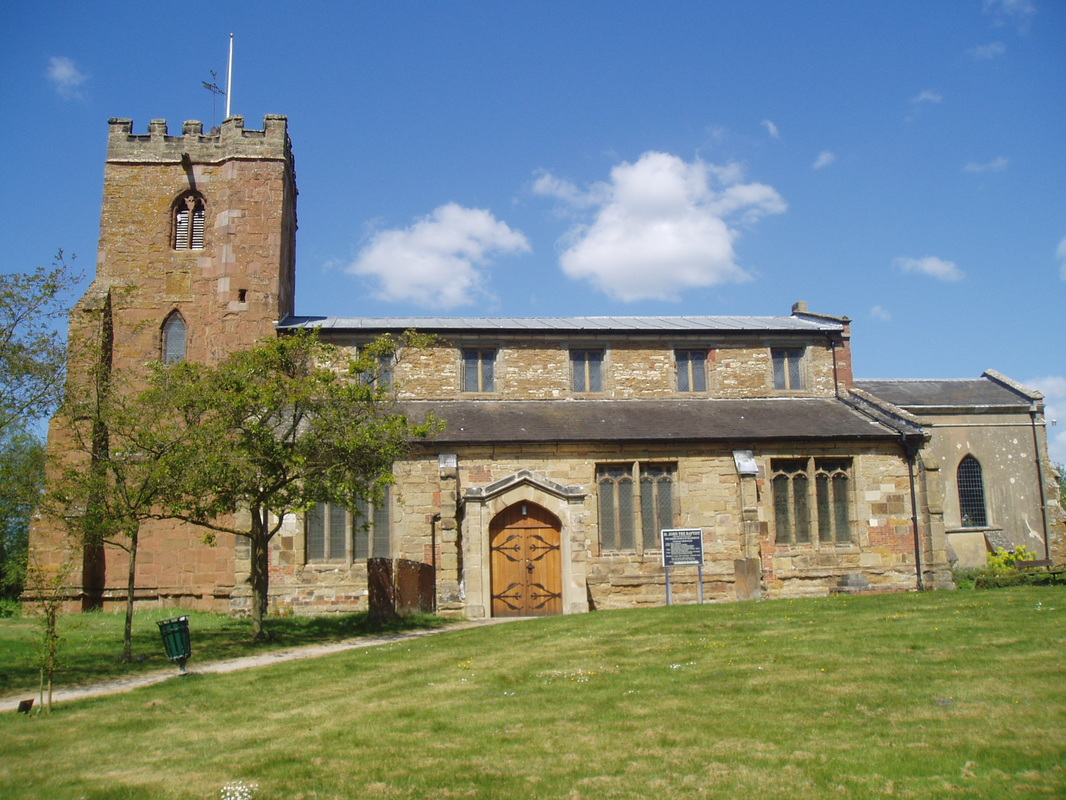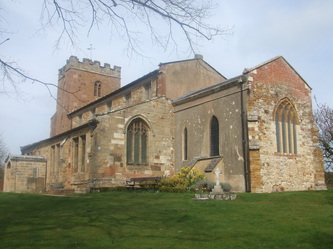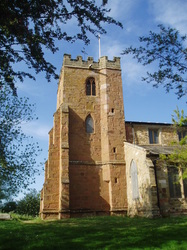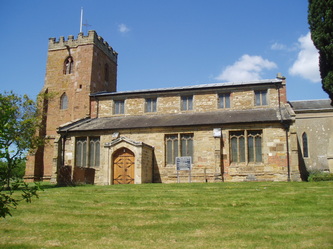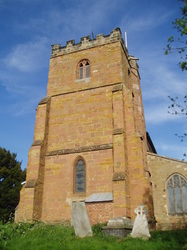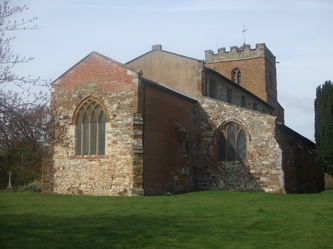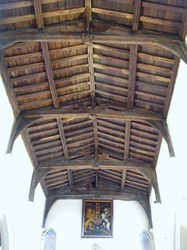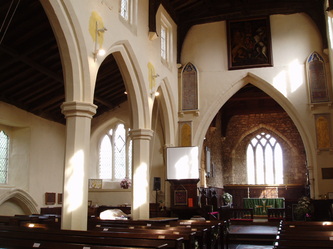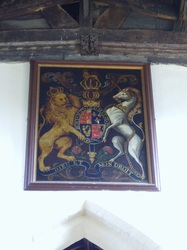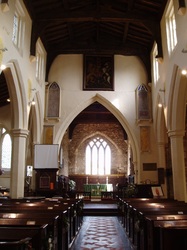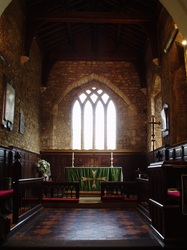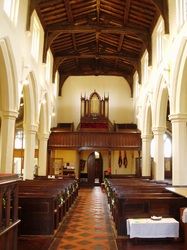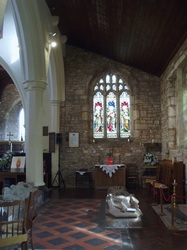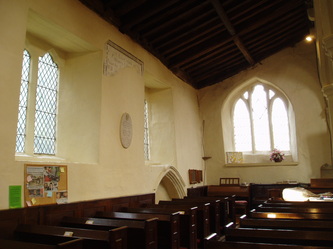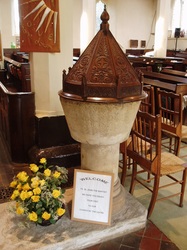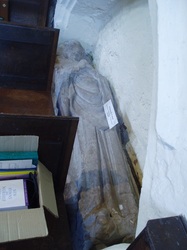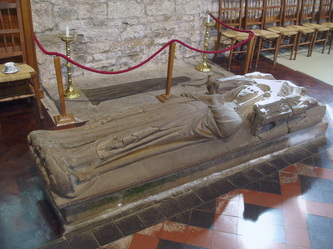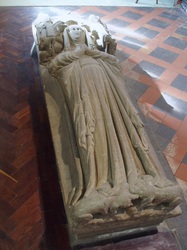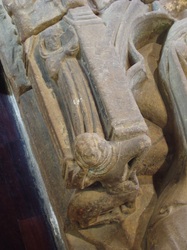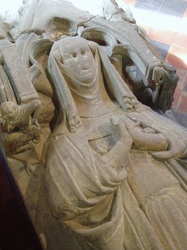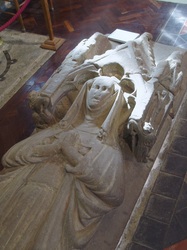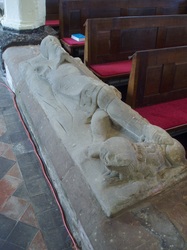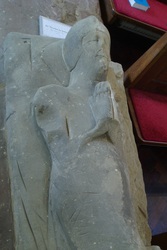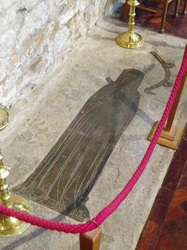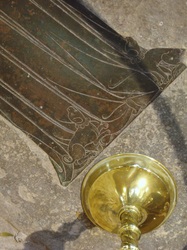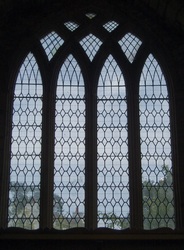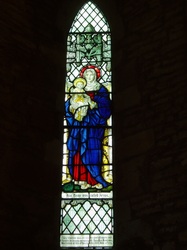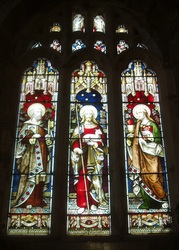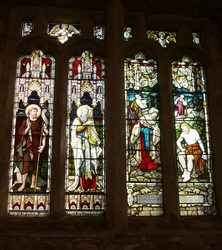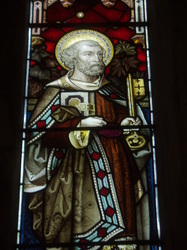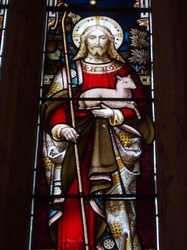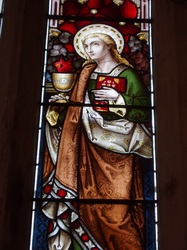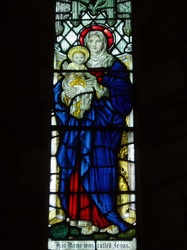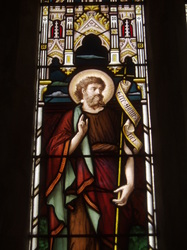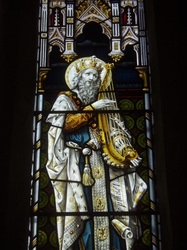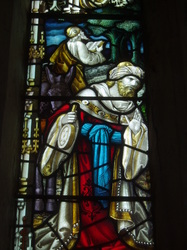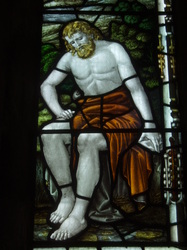Hillmorton - St John the Baptist
I've known the church for years having grown up in the area but only been inside a few times years ago, when it used to be more accessible. It was one of the first ancient churches I ever experienced and left a lasting impression, being one of the very first I was taken to visit when I first developed an interest in old churches at the age of seven (back then I recall I'd never seen such a timeworn, crumbling edifice!), thus I have an nostalgic attachment to this place.
However, despite growing up in Hillmorton I'd never really been aware of it prior to then, since the church is cut off from Rugby's suburbia by the main line between Birmingham and London, meaning it is completely invsible from Hillmorton itself. Normal approach is thus bizarrely through a tunnel under the railway line that leads to the churchyard! The result is that despite serving what is now a large suburb of Rugby the church's location on the very fringe of the countryside ,eans it retains the feel of a rural parish church.
However, despite growing up in Hillmorton I'd never really been aware of it prior to then, since the church is cut off from Rugby's suburbia by the main line between Birmingham and London, meaning it is completely invsible from Hillmorton itself. Normal approach is thus bizarrely through a tunnel under the railway line that leads to the churchyard! The result is that despite serving what is now a large suburb of Rugby the church's location on the very fringe of the countryside ,eans it retains the feel of a rural parish church.
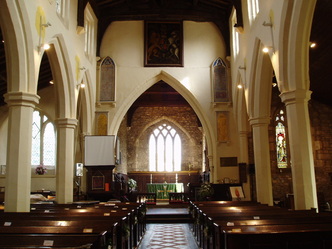
St John the Baptist's is a mainly 13th/14th century building, the west tower is of a rich red sandstone whist the body of the building has been patched up at various dates (especially the chancel, which is partly hidden under rendering) giving it on the whole an attractive unrestored patina.
Inside it is equally unspoilt, retaining a late Georgian feel with it's furnishings, Royal Arms and whitewashed walls (though oddly just chancel and south aisle have been scraped). Victorian glass is confined to 2 south aisle windows (including one strange piecemeal affair) the main east window with it's intersecting tracery is left plain.
Inside it is equally unspoilt, retaining a late Georgian feel with it's furnishings, Royal Arms and whitewashed walls (though oddly just chancel and south aisle have been scraped). Victorian glass is confined to 2 south aisle windows (including one strange piecemeal affair) the main east window with it's intersecting tracery is left plain.
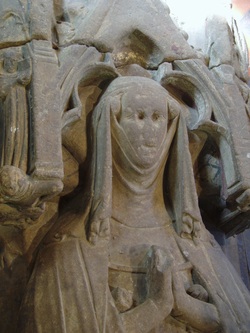
The main items of interest here are the monuments, there are three medieval tombs and an elegant brass of a lady. Of the effigies by far the best is the early 14th century lady in the south aisle with wimple and canopy over her head, thought to be a member of the Astley family, in the south aisle. She is the least damaged of the effigies here and even preserves some traces of the original colouring, specifically on the pillows beneath her head, largely protected by the canopy, which still have a distinct diamond pattern. Either side of the here head and within small canopies of their own, are two small robed clerical figures, themselves supported on more vigourously posed 'atlas' figures with a more lowly demeanour. The features have suffered considerably wear over the centuries, but the original effect can still be imagined, and most have been quite rich when all was still brightly painted.
The nearby late 13th century cross-legged knight across the aisle under the nave arcade is more damaged, with considerable loss of the surface, much of his body appearing as though it has been used as a sharpening stone for tools! The detail on his face and hands survive along with the armour of his legs, but much of the rest, including his entire arms has been hacked or worn away (even the poor lion at his feet is faceless). The 13th century robed priest under an arch in the north aisle (easily missed, being almost hidden behind benches) is also badly mutilated, his face being damaged beyond recognition of any features.
The final monument lies alongside the Lady's effigy in the south aisle is the beautiful brass of another noble medieval Lady (up until the early 20th century she was apparently hidden beneath a trapdoor between pews, since moved) a particularly fine late 14th century piece, though alas the inscription she holds is largely missing and she remains unidentified. two small dogs with bells around their collars nestle at her feet.
The nearby late 13th century cross-legged knight across the aisle under the nave arcade is more damaged, with considerable loss of the surface, much of his body appearing as though it has been used as a sharpening stone for tools! The detail on his face and hands survive along with the armour of his legs, but much of the rest, including his entire arms has been hacked or worn away (even the poor lion at his feet is faceless). The 13th century robed priest under an arch in the north aisle (easily missed, being almost hidden behind benches) is also badly mutilated, his face being damaged beyond recognition of any features.
The final monument lies alongside the Lady's effigy in the south aisle is the beautiful brass of another noble medieval Lady (up until the early 20th century she was apparently hidden beneath a trapdoor between pews, since moved) a particularly fine late 14th century piece, though alas the inscription she holds is largely missing and she remains unidentified. two small dogs with bells around their collars nestle at her feet.
The stained glass here plays a very minimal role, being only located at the east end of the south aisle with a mid Victorian east window (Christ flanked by SS Peter & John) which Chris Pickford has kindly informed me is the work of Holt of Warwick. There is also a strange hybrid four-light window adjacent which looks as though it has taken as many as three separate phases to completely fill it, with two Victorian figures under canopies on the left (St John the Baptist & King David, perhaps by different artists but under identical canopies!), and an early Edwardian scene of the Good Samaritan to the right; both may again by the work of Holt's studio, but the work of two very different designers some 30 years apart, bearing no relationship in style or content whatsoever.
The only other window dates from 1924 and only reappeared in the 1990s in the south wall of the chancel, presumably having been removed and stored for some years (for reasons unknown). It is a single light Madonna & Child (again possibly the work of Percy Bacon's studio).
It seems odd to me that the east window, the focal point of the interior (and therefore the first, sometimes only, to be commissioned), remained plain glazed whilst lesser windows were filled with stained glass, what an opportunity it could provide to a contemporary artist!
The only other window dates from 1924 and only reappeared in the 1990s in the south wall of the chancel, presumably having been removed and stored for some years (for reasons unknown). It is a single light Madonna & Child (again possibly the work of Percy Bacon's studio).
It seems odd to me that the east window, the focal point of the interior (and therefore the first, sometimes only, to be commissioned), remained plain glazed whilst lesser windows were filled with stained glass, what an opportunity it could provide to a contemporary artist!
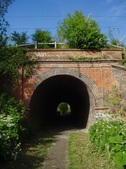
St John's is a wonderful old church well worth exploring but little visited on the edge of suburban Rugby, but as it's normally kept locked, so unless you're lucky with timing will probably require a phonecall to open up. Unfortunately there are currently no keyholder details, however I have always found the parishoners here very friendly and welcoming, and there is talk of possibly opening up the church to visitors on a more regular basis.
Edit: In 2022 this church is now happily kept unlocked during normal daytime hours and welcomes visitors.
Aidan McRae Thomson 2012
Edit: In 2022 this church is now happily kept unlocked during normal daytime hours and welcomes visitors.
Aidan McRae Thomson 2012
